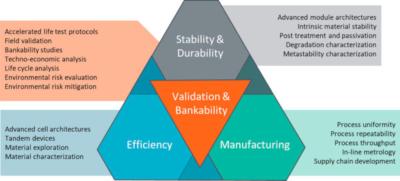Recent SETO report covers perovskite PV challenges and opportunities
In its recent report, the US Department of Energy Solar Energy Technologies Office (SETO) outlined the main technical challenges, commercialization risks and opportunities and the efforts being made to overcome the obstacles standing before the commercialization of perovskite solar cells.
It's important to note that while SETO mentions that most of the development in the solar field in the next few years will rely on silicon and CdTe, it sees potential in nascent technologies like halide perovskites.






